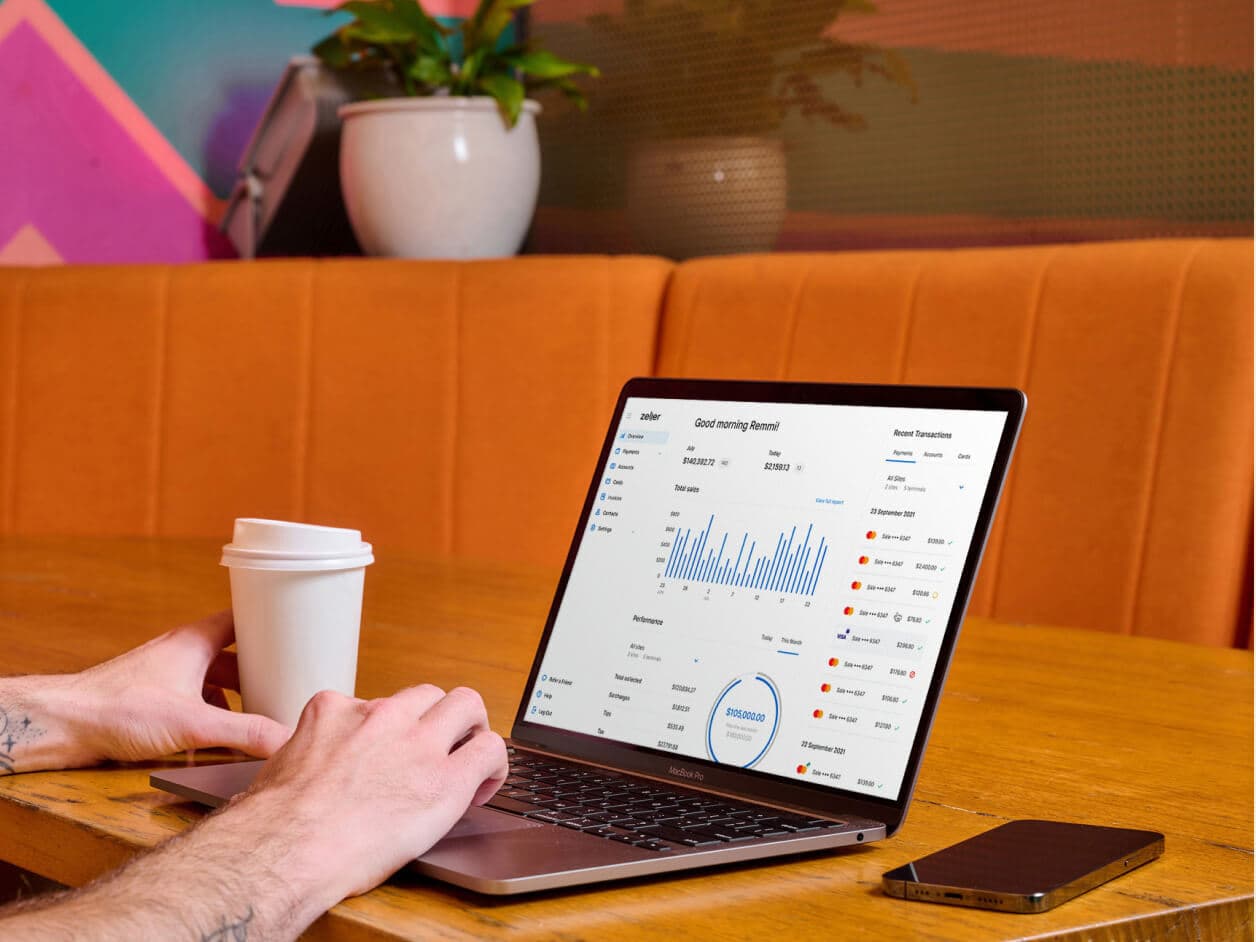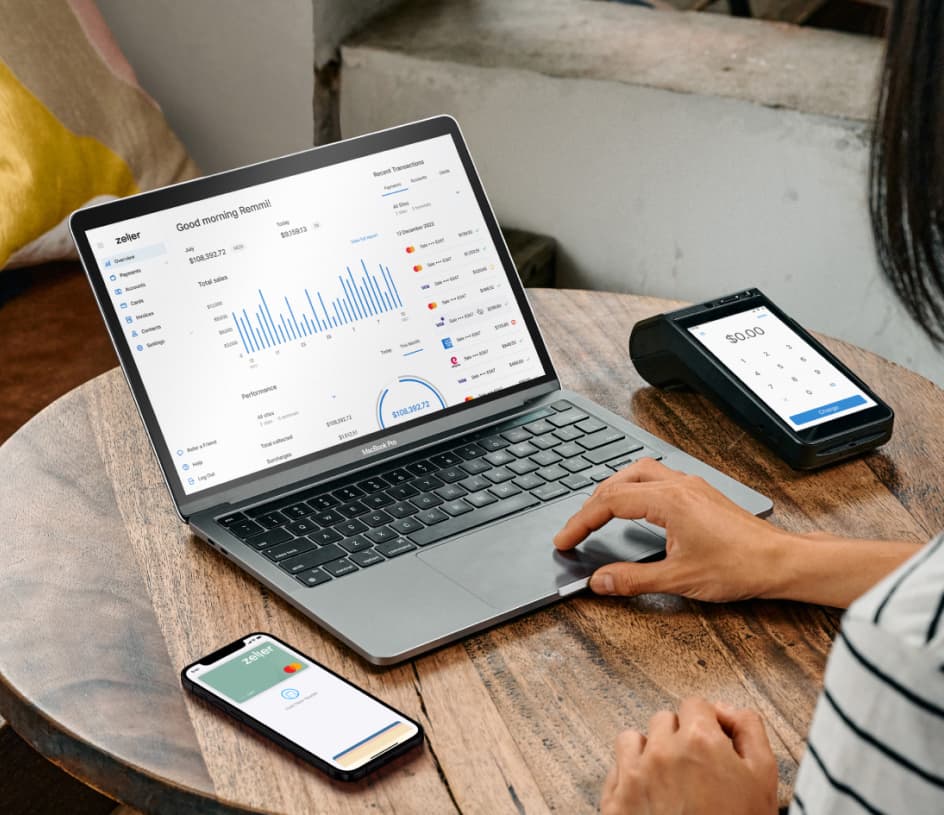
- Business Growth & Optimisation
Track Financial Metrics to Reach your Business Targets
Which metrics and KPIs should you be monitoring for business growth?
To accurately gauge the financial health of your business, it’s essential to understand certain metrics and key performance indicators (KPIs). While crunching numbers might seem confusing at first, these important financial calculations don’t have to become a burden. When you know the right financial metrics to focus on — and how to track them easily — your business will be well-placed to make immediate and long-term improvements.
In this blog, we’ll cover how understanding key metrics can help your business grow, as well as how Zeller can help you keep track of the most important financial information.
What are metrics and KPIs?
Any quantifiable data your business might monitor for signs of operational success or performance tracking purposes can be considered a metric. Financial metrics tend to be some of the most commonly used, and certainly among the most valuable. By continually tracking key financial metrics, your business can compare meaningful figures and trends against a baseline to see what is changing over time.
KPIs are more specific, industry-dependent metrics that matter to your particular business and may impact its growth or otherwise. KPIs generally come with predetermined goals and should be closely linked to your business objectives. Given their direct influence on the future viability of a business, financial metrics such as profitability and cash flow also represent KPIs.
10 key metrics your business should be tracking
By taking advantage of financial metrics and KPIs, business owners can gain a clearer picture of their organisation’s current financial position and performance. At the same time, this data can help inform your understanding of the financial outlook of the business.
There are numerous financial metrics and KPIs worth tracking. Each metric could be important in its own right, and together a series of metrics can provide valuable insights into the state of your business, what it’s doing well, and what it could be doing better. For example, would you have sufficient cash to support a major capital investment, hire additional staff, or launch a new product or service?
Here are 10 of the most important financial metrics and KPIs to consider, how to track them, and what they can tell you about your business.
1. Revenue
To survive and thrive, your business needs healthy revenue — the amount of money you make in sales, before calculating expenses. Revenue forms a key element of your calculations for most financial metrics.
To measure revenue, your business will use either the accrual method or cash method of accounting. Accrual accounting includes all customer purchases as revenue even before payment is actually received. Cash accounting limits revenue to the money already in your business bank account.
2. Expenses
All the costs your business incurs to operate and earn revenue are considered expenses. These expenses might include equipment, supplies and wages amongst others. As with revenue, your expenses are factored in by either accrual accounting (as they are incurred) or cash accounting (only once paid).
3. Net profit
Metrics don’t come much more important than net profit — the money left over once all expenses and taxes have been subtracted from your revenue. Generally speaking, for your business to be solvent, it must be bringing in enough revenue to cover all its outgoings.
4. Cash flow
Cash is the lifeblood of a small business — it’s necessary to pay ongoing expenses. Your cash flow is the amount of money periodically going in and out of your business. Positive cash flow means your business is bringing in more money than it’s paying out, while negative cash flow means the opposite.
5. Working capital
Working capital — the difference between current assets (such as cash and accounts receivable) and liabilities (such as accounts payable and payroll) — is a formula measuring the short-term financial health of your business. By revealing the liquidity available to cover immediate expenses, this metric can help shine a light on the true financial position of your business moving forward.
6. Budget vs. actual
As its name suggests, the budget vs. actual metric compares your company’s actual spend or sales against the budgeted amounts across different areas of the business. Analysing budget variance can help you identify where the business is overspending, or (hopefully) where it is outperforming expectations.
7. Break-even point
When revenue is equal to costs — in other words, when there is neither a profit or a loss — your business has reached the break-even point, otherwise known as the margin of safety. This metric helps you work out when the business is likely to start earning a profit.
8. Gross profit margin ratio
Gross profit margin ratio shows business revenue after the cost of goods sold (COGS) has been deducted. In short, this ratio represents the direct costs of making a product. While similar to gross profit margin ratio, profit margin ratio accounts for all expenses as opposed to COGS only.
9. Churn rate
Churn rate is a calculation of the frequency of customers no longer using your product or service over a given period of time — for example, one year or five years. This metric should at least line up with industry standards and meet your business model. If your churn rate is too high, your business may need to make serious adjustments to its offerings or find ways to better nurture its existing customer base.
10. Burn rate
Your burn rate — a calculation of negative cash flow — measures the amount of cash you’re spending and how quickly you’re spending it. It’s a common metric of business performance and valuation. Reducing the amount of cash your business spends per month can help grow your profits, so being able to calculate and understand your cash burn rate is vital.
Metrics you can track in Zeller
Financial software can help you set and track these metrics and KPIs. By eliminating spreadsheets and other manual methods, your business will find it significantly easier — and far less time-consuming — to keep a close analytical eye on everything from basic metrics like revenue and expenses to more advanced data such as working capital and break-even point.
In addition to simplifying calculations, this type of software allows you to automatically and regularly create reports on select metrics. Best of all, these solutions are designed to provide you with the real-time data and insights you need to gauge the progress and profitability of your business as you work towards achieving your financial goals.
However, if you’re thinking about investing in expensive tools for tracking financial metrics, keep in mind the free Zeller Dashboard can help straight away. Zeller is more than a smarter business payments system, it’s an all-in-one solution that provides additional value to Zeller merchants — and this includes the ability to track worthwhile financial metrics.
A number of valuable metrics are available in Zeller Dashboard including:
Total sales by day/month — You can track total takings by the day and/or month, then compare these figures to previous corresponding periods.
Recent transactions — You can track real-time sales, deposits and purchases.
Tips — You can monitor the tips received by your business, which may provide an indication of staff engagement and performance that is otherwise difficult to assess.
Performance by location — You can track the total takings at each business location. If, for example, one location is performing better than another, you might move some staff members to the busier location, or focus your recruitment efforts accordingly.
Business expenses — When you use Zeller Debit Card, you can see all of your expenses in Zeller Dashboard. You can also categorise those expenses, so it’s easy to see where your business is spending money and identify opportunities to potentially cut back on spending.
The most pertinent financial metrics and KPIs vary for each business within different sectors, so it’s crucial you identify the data that can help your business grow. Once you’ve defined and selected the right metrics to focus on, technology can provide the comprehensive information your business needs to reach its targets.



